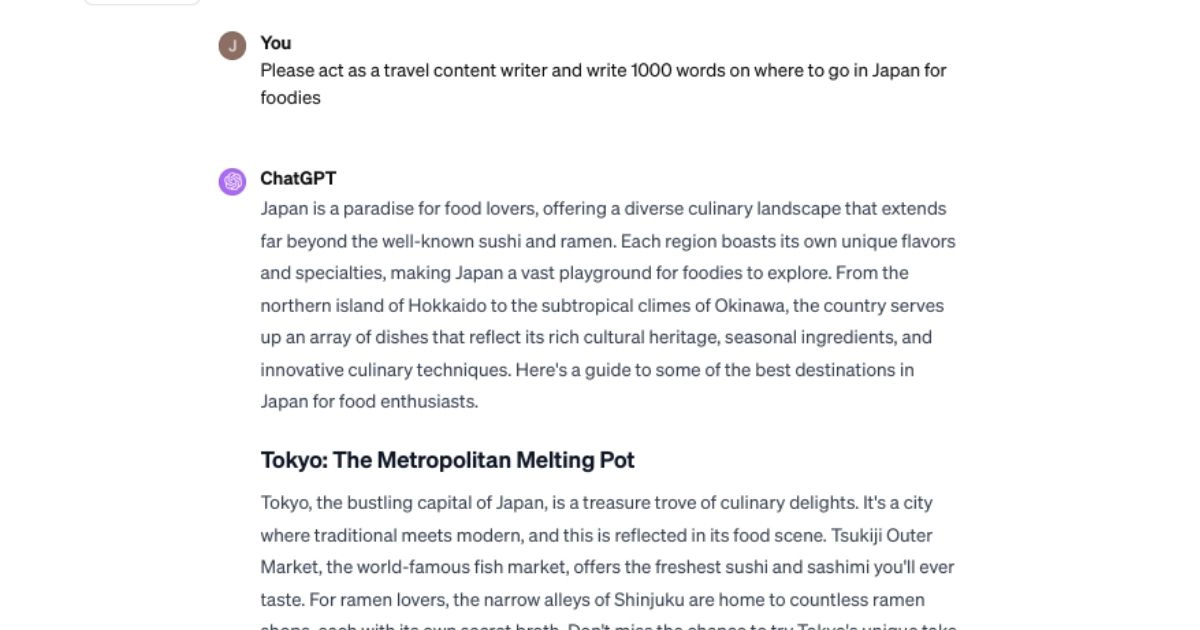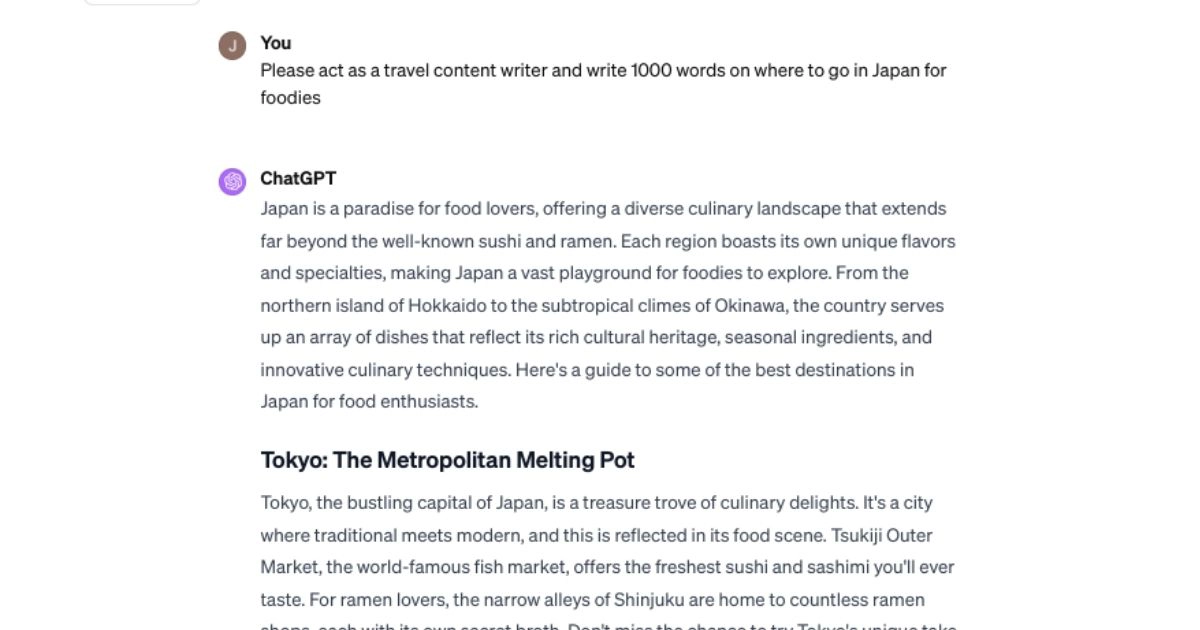
Travel Copywriter
Did you know the New York Times filed a lawsuit against OpenAI for plagiarism? ChatGPT had copied their content nearly word for word – it changed just one or two adjectives to make it look ‘original’.
Now you may think this is an extreme example, but it actually happens a lot. And guess what? If you’ve posted AI-generated text on your website, there’s a very high chance that piece of content is plagiarised. And I’m not exaggerating or scaremongering, either.
Read on to find out more about ChatGPT and plagiarism and what you can do to avoid it.
Table of contents
My experience with ChatGPT and Plagiarism
Using it as a travel copywriter, I’ve found it plagiarises long-form content nearly every time. That’s anything over 400 words. You see, AI doesn’t actually “create” writing, it generates it based on the data it has. And what data does it have? Stuff that’s already published.
Many times, I ask ChatGPT to create content. Then I enter the same query into Google and find suspiciously similar wording. To prove my point, check out the screenshots below – you may need to zoom in on mobile.
I asked ChatGPT to write a travel copy about the best time to visit Thailand. I then Googled the same query and found it had copied Audley Travel. This sort of thing happens a lot.
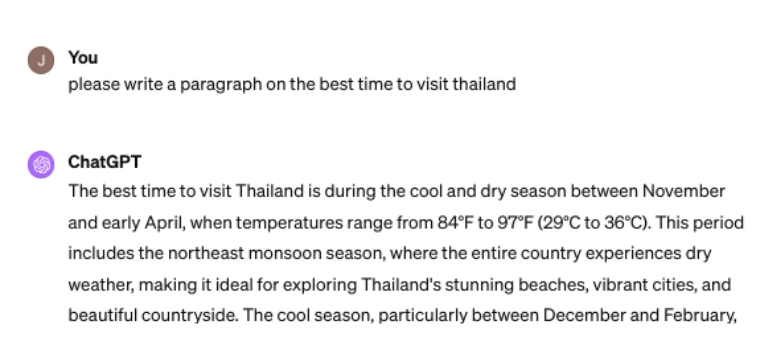
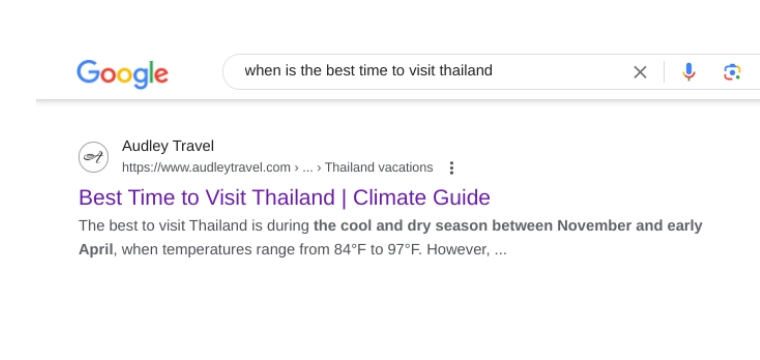
Why is plagiarism a problem?
It can cause legal issues.
Posting plagiarised content puts you in breach of copyright. And this may lead to a court case if the owner of the content decides to take action. That would cost a lot of money, not to mention the bad PR.
You’ll look bad to your customers.
The content that ChatGPT plagiarised from Audley Travel is on page 1 of the search results. The 4th one down in fact. Now, we all know that customers shop around and get quotes from different travel companies. Imagine if they’d looked at Audley Travel’s website and then came to yours and read the same content. It wouldn’t make a great impression, would it?
Plagiarised content generally won’t rank on Google.
The search engine giant is all about its E-E-A-T philosophy. This is content that shows your expertise, experience, authority, and trust. Read the guidelines here on Google’s website for yourself. Plagiarised content is considered spammy, unoriginal, and created for search engines, not humans. That means the algorithm won’t rank it.
Using plagiarism detectors
As a travel copywriter, here’s what I’ve learned:
Every time you produce a piece using AI, run it through a plagiarism checker. EVERY SINGLE TIME.
So how do you do this? With an online detector. In my opinion, Grammarly’s plagiarism checker is the best free tool. Keep in mind though, that the free tools often don’t tell you exactly what’s been copied. They just point out the content contains plagiarised words. So if you use a free one, you’ll need to completely rewrite the work so it’s original.
In the screenshots below, you’ll see what a plagiarism checker looks like. Again, you may need to zoom in on mobile.
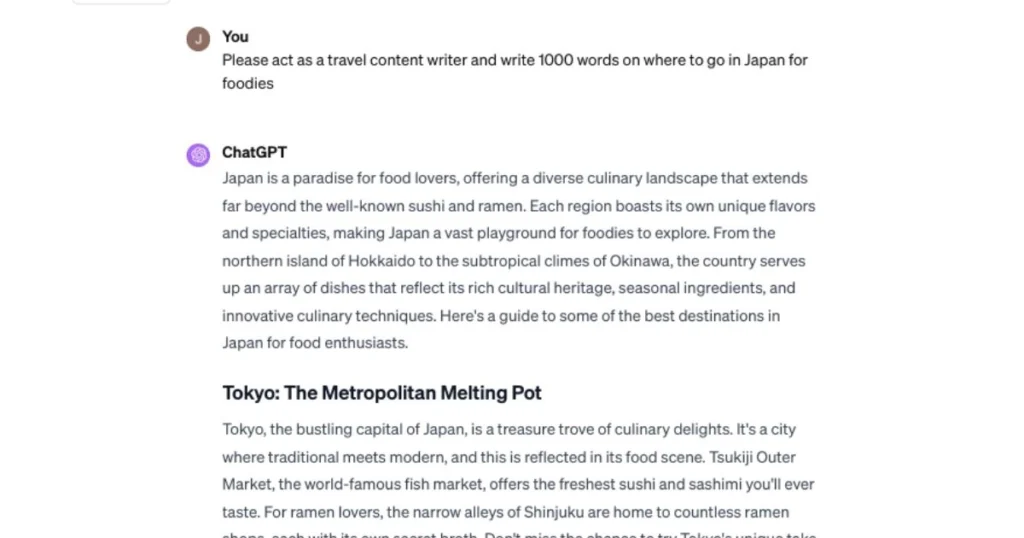
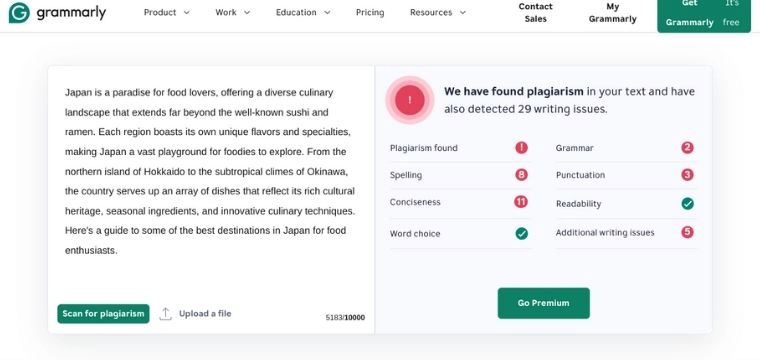
Paid plagiarism detectors are better than free ones as they show you exactly what content is copied. It even includes the source so you can cite it. The downside is these tools are very pricey – you often pay per piece of content, too. From my experience, the best paid plagiarism detector is Scribbr.
How to avoid plagiarism
I said at the start of the post, there is good news. And it’s this: there are workarounds, such as:
Give it a very detailed prompt.
The more detailed your prompt, the less likely it is the output will be completely plagiarised. How detailed exactly? Well, if you’re writing a blog post, create the structure yourself. For example:
“Please act as a travel copywriter and create a 1000-word blog post for foodies visiting Japan. Please follow this structure. Paragraph 1: Introduction Paragraph 2: Best food to eat in Tokyo Paragraph 3: Different types of Ramen” etc...
This will reduce the risk of plagiarism as the content is, strictly speaking, original. You came up with the structure, after all. The downside is having to come up with the structure in the first place. I will write a more detailed post about prompts in the future.
Ask it to cite the sources.
When you ask it to create a blog post, you can write in the prompt “Please cite your sources and where you found the information”. You will need a plugin from the GPT store to do this. I find WebReader works well. When doing this, it will give you the links to where the information comes from.
Though this will help you avoid plagiarism, it may end up citing your competitors. And you don’t want to publish a link to your competitors’ websites, do you? But at least you can attempt to rewrite the output so it doesn’t sound plagiarised. Having to rewrite the content is the downside. And just a heads up, paraphrasing is still considered plagiarism.
Get a human to write it.
Of course, I’m biased here. But the ultimate way to avoid publishing plagiarised content is to hire a human travel copywriter. We humans ensure originality and creativity, and that’s what your customers -and Google- want to see.
Think about this next point, too. Between writing detailed prompts, editing output and checking for plagiarism, you’re not saving much time using AI. I even find it’s quicker if I write content myself – writing prompts, giving feedback, and editing the output takes me longer.
Conclusion
ChatGPT is an excellent tool for productivity and content creation. But, the bottom line is that artificial intelligence is not artificial creativity. I’ve found it plagiarises a lot. I suggest you avoid publishing AI-generated content on your website. Instead, always edit the output and check for plagiarism. Google’s E-E-A-T philosophy means your content should be original if you want it to appear in search results. If you chose to use a human travel copywriter, I’m available.


